Tank seal for a washing machine - how to lubricate it and how to replace it?
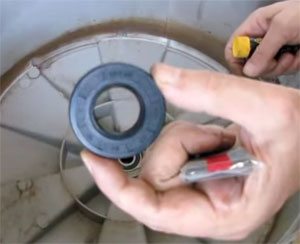 Today, automatic washing machines have become the most common things. They, like many other household appliances, are designed to take on some of the household tasks and make a person’s life more comfortable and enjoyable. The design of the machines allows them to perform their duties efficiently. They run on electricity, use water and have some parts that should not come into contact with moisture.
Today, automatic washing machines have become the most common things. They, like many other household appliances, are designed to take on some of the household tasks and make a person’s life more comfortable and enjoyable. The design of the machines allows them to perform their duties efficiently. They run on electricity, use water and have some parts that should not come into contact with moisture.
The combination of these features of the machine’s functioning obligated their designers to create a system that allows them to combine all these things and at the same time maintain operational safety and the possibility of long-term operation of household appliances. Some of the tasks associated with protecting against water getting into unwanted places were taken on by various cuffs and seals for washing machines.
Description of the seal
The oil seal is a special material whose task is to seal various joints and prevent water leakage.
It is used in all types of automatic washing machines. However, in different models it may have a different shape and size. The seals used in machines may have some differences from the seals used in other types of household appliances.
Their properties and characteristics depend, among other things, on the qualities of the rubber material from which they are made. In addition to rubber, they are made from silicone rubber, fluorine rubber and other materials.
In the manufacture of all types of seals for a washing machine, a special metal insert is used. It plays the role of reinforcement and helps maintain the correct shape.This insert can be quite fragile, so you must be careful during the replacement process to avoid damaging it.
Oil seal in the design of a washing machine
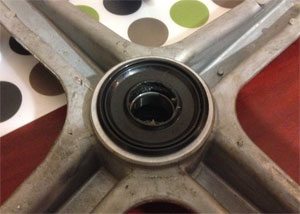 Let's look at the issue of the location of the oil seal in front-facing washing machines. The drum in these machines is fixed on a bracket. The bracket has several legs. Usually 3-4 pcs. In the middle of it is a steel axle shaft. It is needed to secure the drum to the bearing assembly. This type of fixation allows the drum to rotate. That is, to have mobility. The axle shaft causes the electric motor to turn.
Let's look at the issue of the location of the oil seal in front-facing washing machines. The drum in these machines is fixed on a bracket. The bracket has several legs. Usually 3-4 pcs. In the middle of it is a steel axle shaft. It is needed to secure the drum to the bearing assembly. This type of fixation allows the drum to rotate. That is, to have mobility. The axle shaft causes the electric motor to turn.
Oil seals for washing machines are not attached to the shaft, but to a special bushing. And paired with it, it ensures normal operation of the washing machine and protection against water leakage. They provide water resistance and protect the bearings and the entire assembly from moisture penetration. If moisture gets on the bearings, then pretty soon they will rust and become unusable.
The oil seal is a very important part of the machine. After all, if it is damaged, then you will need to change not only the oil seal, but also the bearings. And replacing bearings requires almost complete disassembly of the washing machine. This is a very labor-intensive task. And if you call a specialist, the repair will not be the cheapest. And if you do it yourself, it will require a lot of effort and time.
You can find instructions for replacing bearings yourself below.
Replacement
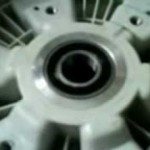 In fact, To replace the seals you need to do the same as to replace the bearings. That is, almost completely disassemble the machine. First you will need to remove the cover (the top part of the case), then remove the front and back walls. Then get to the tank and remove it. Disassemble the tank into two halves. And after that you can get to the bearing assembly.This is how the oil seal and bearings are located. We will not describe the entire replacement procedure in detail, since it is already described in the article on replacing bearings, which is on our website.
In fact, To replace the seals you need to do the same as to replace the bearings. That is, almost completely disassemble the machine. First you will need to remove the cover (the top part of the case), then remove the front and back walls. Then get to the tank and remove it. Disassemble the tank into two halves. And after that you can get to the bearing assembly.This is how the oil seal and bearings are located. We will not describe the entire replacement procedure in detail, since it is already described in the article on replacing bearings, which is on our website.
In order for you to understand how much work you have to do, we suggest you watch a video recording of a similar washing machine repair. You can also replace both the seals for washing machines and the bearings yourself, simply by doing the same thing as the master does in the video. This video is recorded in English, but in order to repeat all the steps or simply estimate the amount of work, you do not need translation. Watch the video:
Oil seal lubrication
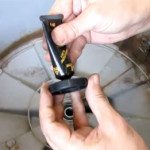 When replacing a bearing and oil seal, it must be filled with lubricant. The best option would be to use those
When replacing a bearing and oil seal, it must be filled with lubricant. The best option would be to use those 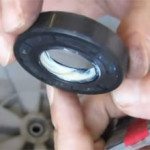 lubricants recommended by the machine manufacturer. However, such lubricant may not be cheap. Some craftsmen use automotive and other types of lubricants. Such as:
lubricants recommended by the machine manufacturer. However, such lubricant may not be cheap. Some craftsmen use automotive and other types of lubricants. Such as:
- Litol-24m,
- CIATIM-221,
- AZMOL-Alumina,
- AMBLIGON,
- and etc.
It is believed that most types of lubricant are not suitable for this purpose. Since they soften the oil seal and it may fail again in a year or two. Therefore, if you want to be sure that the machine will work properly and for a long time, it is better to use lubricants recommended by the manufacturers or others that you have tested in practice.
Interesting:
10 reader comments

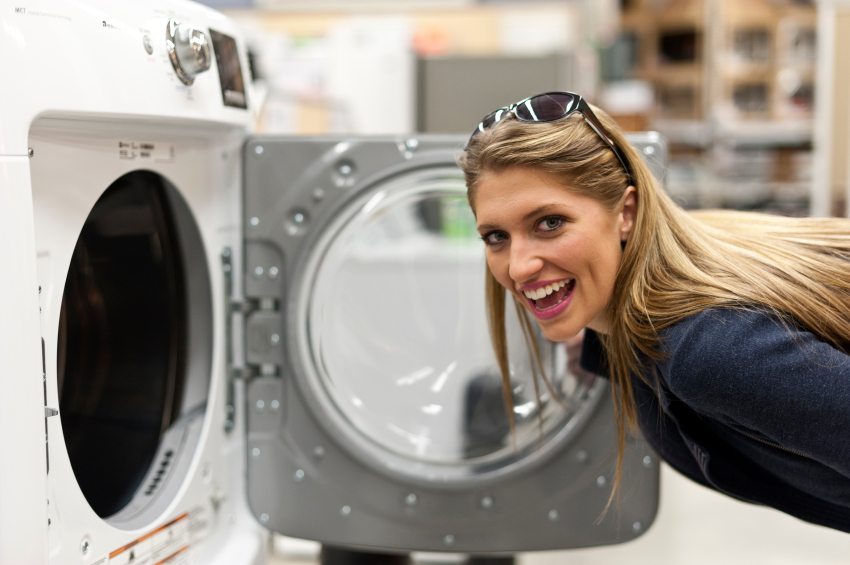
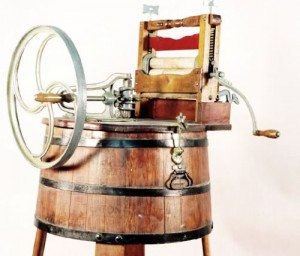
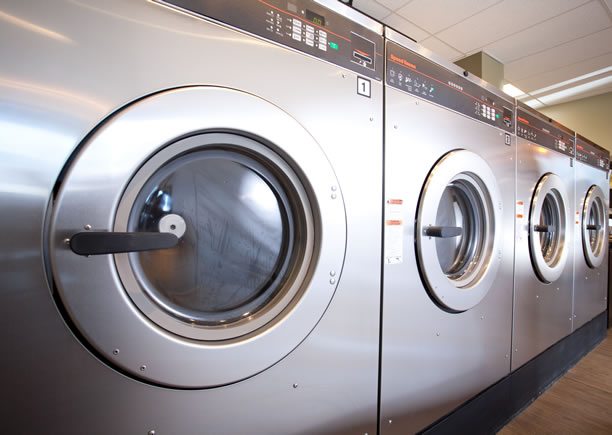
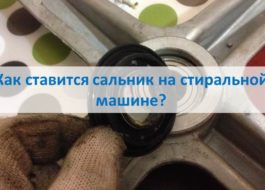

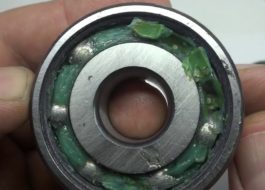


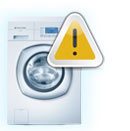
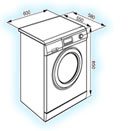


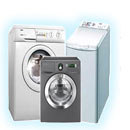
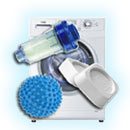


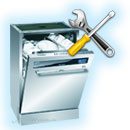
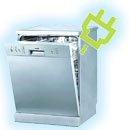


So what should you lubricate with? What lubricant with optimal properties can be found on sale?
My friend worked as a washing machine repairman for about 5 years. He always used regular solid oil. And I smeared it a lot. Either he was being generous, or he really should :)
What difference does it make what he smeared with if we will never know how long these machines worked? A properly installed oil seal should last about five years, by the way.
Nowadays, it’s a rare detail that lasts so long)
Lithols, grease and other auto-lubricants are washed out with washing powders within 2-3 months. Then another two months pass until the bearings rust. That's exactly six months of warranty after replacing the bearings. The oil seals need to be lubricated only with a special lubricant for oil seals of washing machines. It is resistant to powders. Sold in syringes for single use.
Tell me at least one lubricant that will be resistant to modern washing powders. Now the workshop is asking for at least 3-4 thousand to repair my washing machine, and not everyone will take it, and even if they do, as a friend wrote before, it is not yet known what they will stuff this seal with. I disassembled it myself at home, changed the bearings and oil seal, of course, I couldn’t find the necessary lubricant - I lubricated it with lithol and reassembled it. How long will it work? But I already know this machine inside out: what it needs, what parts and how to get into it, etc.
The LG machine worked for exactly 10 years without replacing the bearings and seal.And then it started grinding (Question - is Indesit grease really necessary for the oil seal as it is the most reliable?
Specialist. grease in a white tube, SkF bearings in bags from Indesit and Merloni, etc. And all this from a home appliance repair store – AWESOME!!! Don't be fooled! The washing machine creaked after half a year. An autopsy showed: the oil seal grease (light brown) turned into an emulsion; The bearing inside is all rusty, as is the lubricant (also rusty). That's why it crunched. I don’t know what they stuff it with. It looks like an ordinary solid oil (which, of course, is a lie), but I was shocked by this picture. I dug through a bunch of information on the internet and came up with the following: in the seal there is only calcium sulfonate, and for the seal you can use thick silicone, or any “metal”-“rubber” lubricant that is resistant to alkalis. So, think about it. Let my bitter experience serve you. And for Eugene: LG uses Kluber isoflex NBU 15 (polyurea) under the brand name NBU 15.
I repaired an Indesit machine with a metal tank 2 years ago. It all happened without any preparation. Made some noise. After disassembling I came to the conclusion - bearings. Found a used one in the garage. USSR-ovskie bearings, litol, CIATIM 201. Cleaned the slightly burnt bearings and refilled them. At the seal the stream was filled with CIATIM. I'm waiting for it to break (the water level during washing and rinsing is below the seal).
The water level is below the oil seal, so the machine spins, water will get in there.